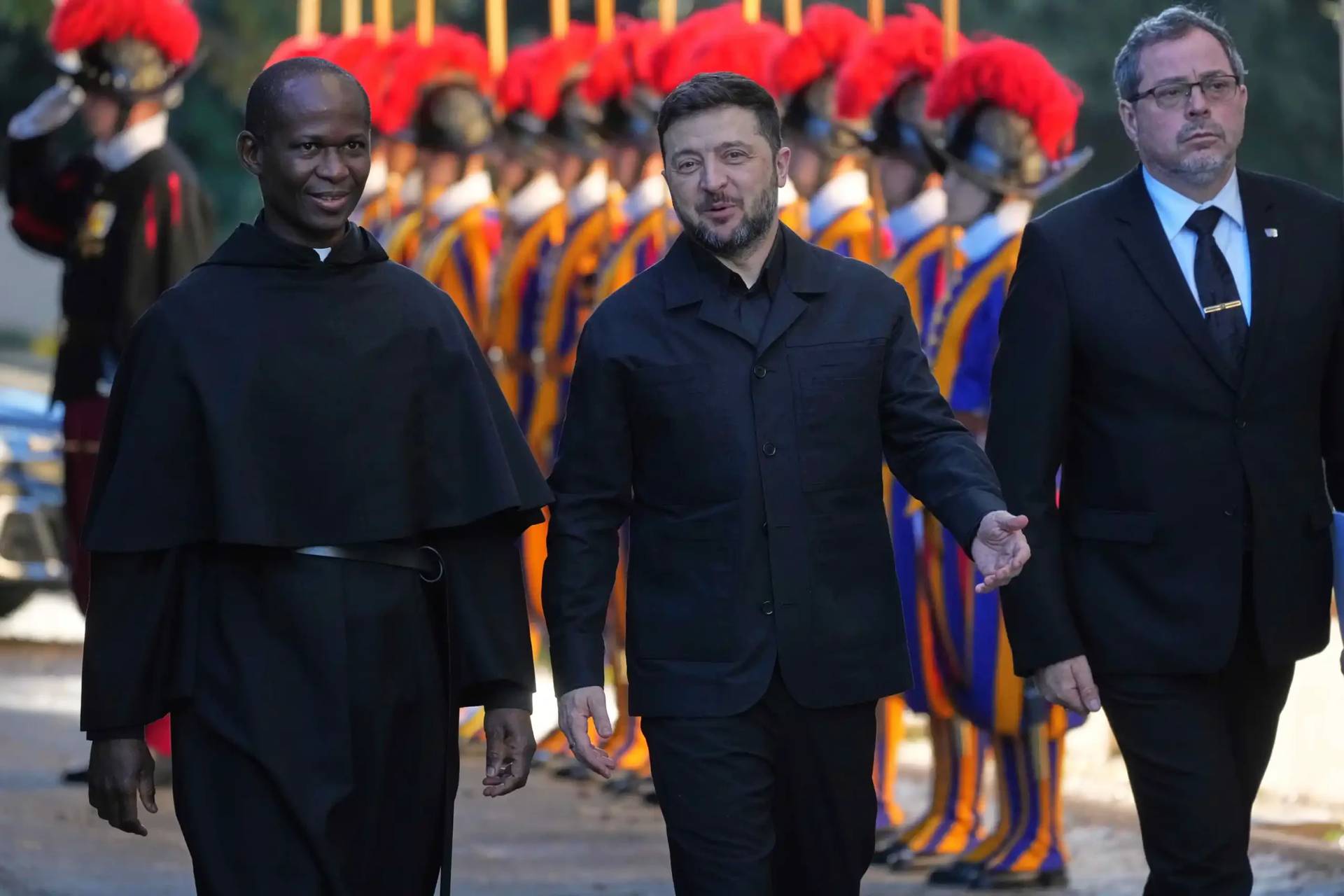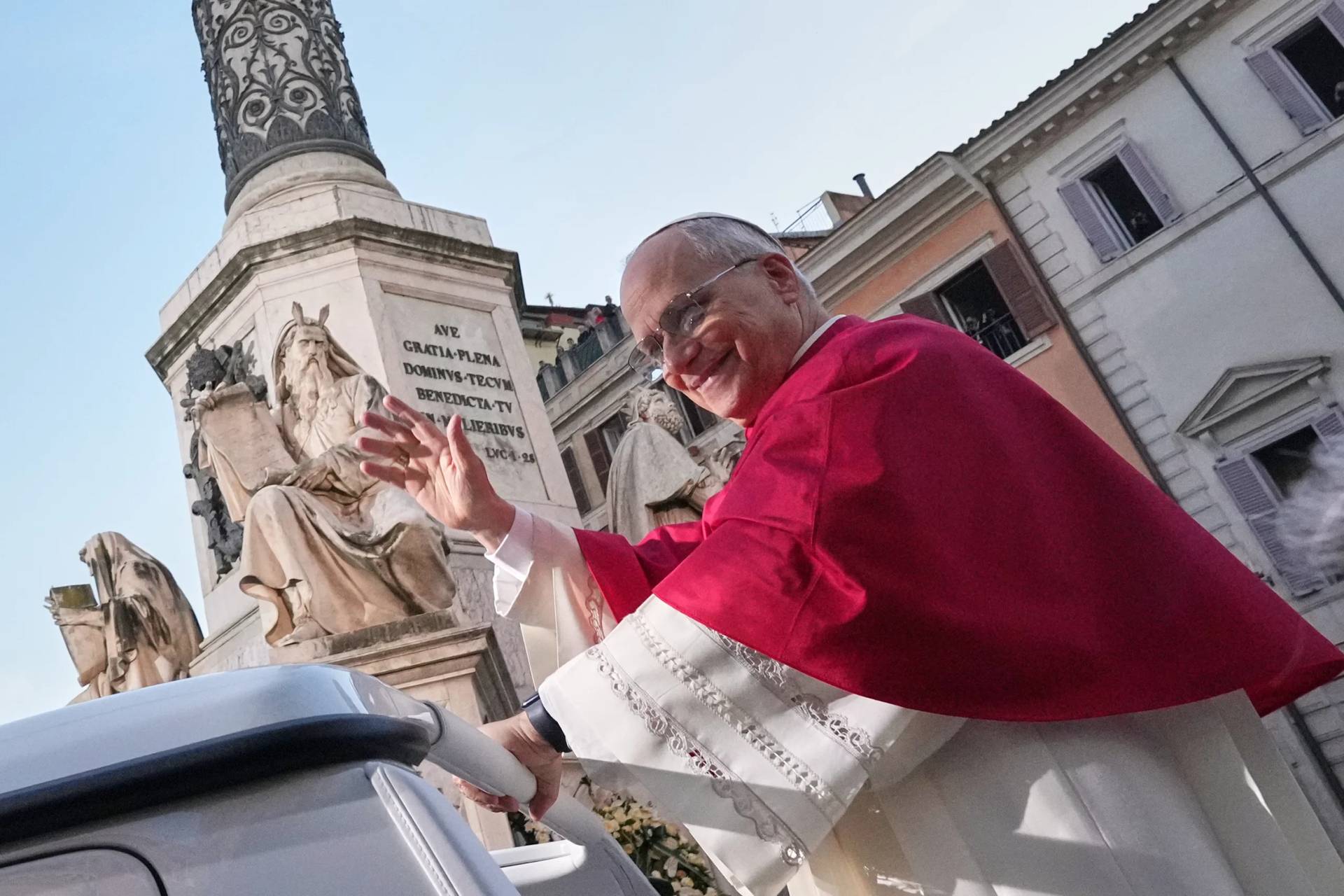[Note: On Tuesday, the Vatican released a document titled Iuvenescit Ecclesia on the relationship between the hierarchy and lay-led movements in the Church. Here, Father Matthew Schneider provides an overview of the document.]
Throughout the history of the Church, God has bestowed gifts upon individuals for the benefit of all. Some of these are through the sacrament of orders and some are charismatic gifts of the Holy Spirit independent of the sacrament of orders. These two types of gifts sometimes find themselves in opposition, but Iuvenescit Ecclesia points out how they should work together.
Iuvenescit Ecclesia builds on existing documents. It finds inspiration in several documents on the mission of the Church in the world, notably Lumen Gentium of Vatican II and Francis’s Evangelii Gauidium. Since it deals primarily with charisms of the laity, it harkens back to Vatican II’s Apostolican Actuositatem and John Paul II’s Christifideles Laici.
Finally, it is an expansion of Mutuae Relationes, which dealt with similar themes but between religious and bishops rather than movements and new communities.
To keep the Vatican’s voice above my own, I will summarize mainly with direct quotations as I go through the 5 chapters.
In the introduction, Iuvenescit Ecclesia points out: “Groups of the faithful, ecclesial movements, and new communities… cannot simply be understood as a voluntary association of persons desiring to pursue a particular social or religious goal. The character of ‘movement’ distinguishes them in the ecclesial landscape in as much as they are powerfully dynamic realities.” (2)
These groups “Propose renewed forms of following Christ in which the communio cum Deo [Communion with God] and the communio fidelium [Communion of the faithful] are deepened.” (2) John Paul II saw them as a “‘providential answer’ arising from the Holy Spirit to the necessity of communicating in a persuasive manner the Gospel to the whole world.” (2)
Chapter one enlightens these new charisms with the New Testament understanding of charisms. “Charism” comes from the Greek word for gift which, “In the New Testament, is used only in reference to the divine gifts.” (4) “Far from situating the charisms on one side and the institutional entity on the other,” (7) Paul puts them together in his various lists of charisms.
Chapter two reminds us of recent magisterial teaching on hierarchical and charismatic gifts. Vatican II said that the Spirit guides the Church when “He both equips and directs with hierarchical and charismatic gifts.” (9)
It also points out God doesn’t just lead us by the sacraments but, “He distributes special graces among the faithful of every rank. By these gifts He makes them fit and ready to undertake the various tasks and offices which contribute toward the renewal and building up of the Church.” (9)
John Paul II emphasized gifts’ complimentary: “There is no conflict or opposition in the Church between the institutional dimension and the charismatic dimension, of which movements are a significant expression. Both are co-essential to the divine constitution of the Church founded by Jesus.” (10)
Benedict XVI emphasized how the two gifts interpenetrate each other: “In the Church the essential institutions are also charismatic and indeed the charisms must, in one way or another, be institutionalized to have coherency and continuity.” (10)
Chapter three gives a theological foundation for the relationship of unity in diversity among hierarchical and charismatic gifts. “The bond in origin between the hierarchal gifts… and the charismatic gifts… has its deepest roots… in the relationship between the divine incarnate Logos and the Holy Spirit.” (11)
This is seen as a historical fact – “The action of God in history always implies the relationship between the Son and the Holy Spirit” (11) – and implied by the theology of the Trinitarian missions – “The two divine missions mutually imply each other in every gift bestowed freely upon the Church.” (11)
“The relationship to the salvific actions of Christ… primarily appears in the hierarchical gifts, in as much as they pertain to the sacrament of Orders.” (12) While “charismatic gifts, bestowed freely by the Spirit… are objectively related to the new life in Christ, in as much as Christians are “individually parts” of his Body.” (12)
Chapter four moves from the theoretical to its application in the life and mission of the Church. “The relationship between hierarchical and charismatic gifts emerges as directed to the full participation of the faithful in her communion and evangelizing mission.” (13) This creates communion: “The incorporation of Christians into the life of Christ, and the diffusion of charity itself amongst the whole faithful.” (13)
Charismatic gifts are not for the individual’s benefit but they, “Belong to the Church herself and are ordered towards a more intense ecclesial life.” (13) The charism granted the apostles and their successors means “In the bishops… for whom priests are assistants, Our Lord Jesus Christ… is present in the midst of those who believe.” (14)
On the other hand, “Each individual member of the faithful is called to accept and correspond to this grace personally in the concrete circumstances of their lives. The charismatic gifts, therefore, are freely distributed by the Holy Spirit.” (15) Charismatic gifts can be given to a group to build “Affinities, closeness, and spiritual relationships,” making up a spiritual patrimony which, “Is shared in and deepened, thereby giving life to true spiritual families.” (16)
The Church is responsible for recognizing a founding charism forming a new group in the Church but Church authorities should, “Bear in mind the unforeseeable nature of the charisms inspired by the Holy Spirit and evaluate them according to the rule of faith with the intention of building up the Church.” (17)
Nonetheless, this approval takes time and needs to, “Extend beyond the period of initial enthusiasm until a stable configuration arises.” (17)
Chapter four ends with eight criteria given for the Church’s Magisterium to discern charisms, five of which come from Christifedils Laici 30. The main differences are an emphasis on evangelization, accepting other charisms and accepting suffering. The first criterion is, “The Primacy of the vocation of every Christian to holiness.” (18) Second, “Commitment to spreading the Gospel. Authentic charisms ‘are gifts of the Spirit integrated into the body of the Church, drawn to the center which is Christ and then channeled into an evangelizing impulse.’” (18)
Third, “Profession of the Catholic Faith,” (18) which simply means within the bounds of orthodoxy. Fourth, “Witness to a real communion with the whole Church,” (18) which means communion with the Pope and local bishop. (18) Fifth, “Recognition of and esteem for the reciprocal complementarity of other charismatic elements in the Church,” which refers to the, “Ability to be integrated harmoniously into the life of God’s holy and faithful people for the good of all.” (18)
The sixth criterion is, “Acceptance of moments of trial in the discernment of charisms,” meaning charisms need, “Humility in bearing with adversities.” (18) Seventh, “Presence of spiritual fruits such as charity, joy, peace and a certain human maturity.” And finally, “The social dimension of evangelization,” because, “At the very heart of the Gospel is life in community and engagement with others.” (18)
The final chapter deals with how this relationship happens practically in the Church. Both sides need to accept from and learn from the other: “The establishment of good relations between the diverse gifts in the Church requires the real integration of the charismatic entity within the pastoral life of the particular Church.” (20)
The universal Church guarantees unity while the apostolic office of a bishop, “Does not remain confined within their own diocese but is called to flow out to the whole Church.” (21) This is important because, “Charismatic gifts are given to the whole Church [while] the dynamism of these gifts must actualize itself in the service of a concrete diocese.” (21)
“The charismatic gifts bestowed by the Spirit can be related to the entire order of the ecclesial communion both with reference to the sacraments and to the Word of God.” (22) Thus, “It is necessary to recognize the goodness of the different charisms that give rise to the ecclesial groups,” because “They represent an authentic opportunity to live and develop one’s proper Christian vocation.” (22)
These groups can give life to individual Christians in various states of life: priests, laity, and religious.
Towards the end, the document reminds us of its purpose, “To clarify the theological and ecclesiological place of the new ecclesial groups in the light of the relationship between the hierarchical and charismatic gifts.” (23)
The document is a beautiful reminder that these are two sides of the same coin, sharing a common mission.
Father Matthew P. Schneider, LC is a priest with the Legionaries of Christ ordained in 2013. He has over 50,000 followers between Twitter and Instagram. He lives in the Washington, D.C., metro area, where he studies and helps out with a few ministries. Originally from Calgary, Alberta, Canada, Schneider has worked throughout North America.












